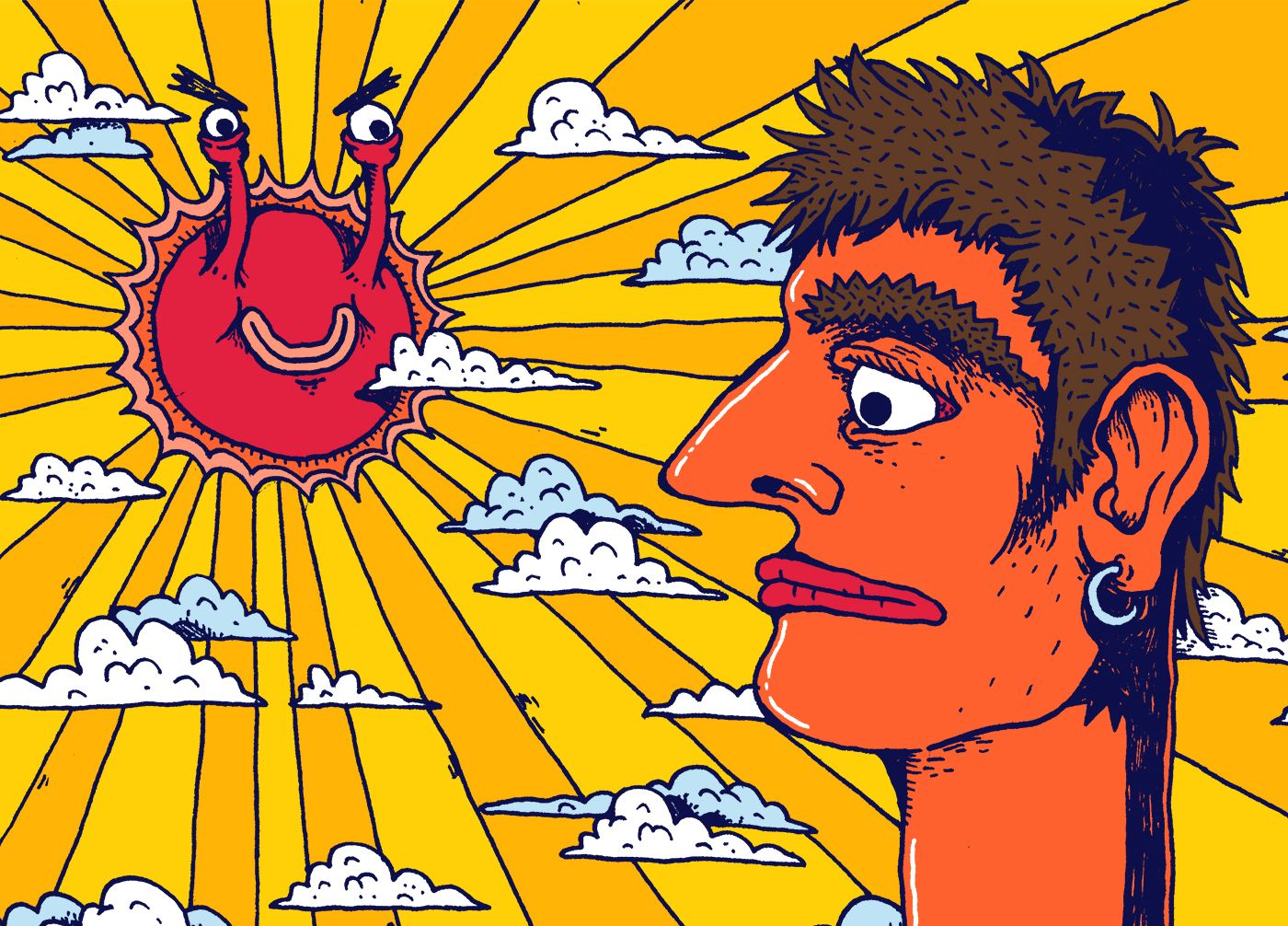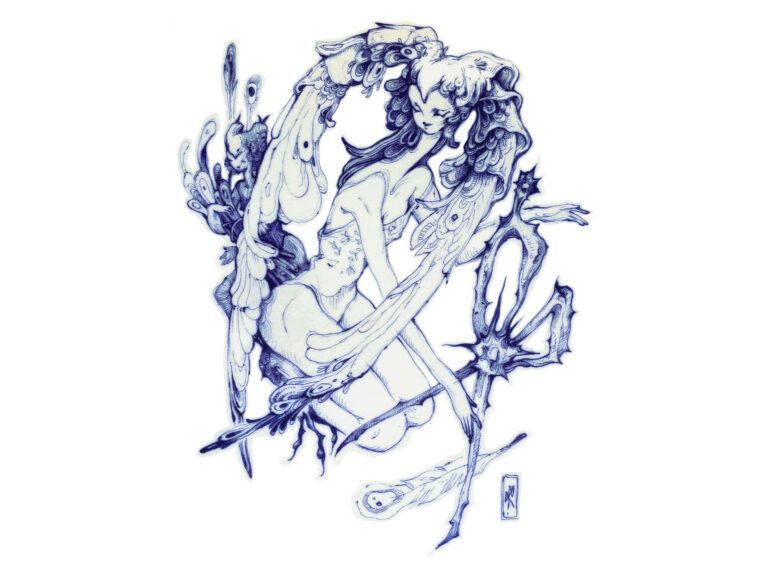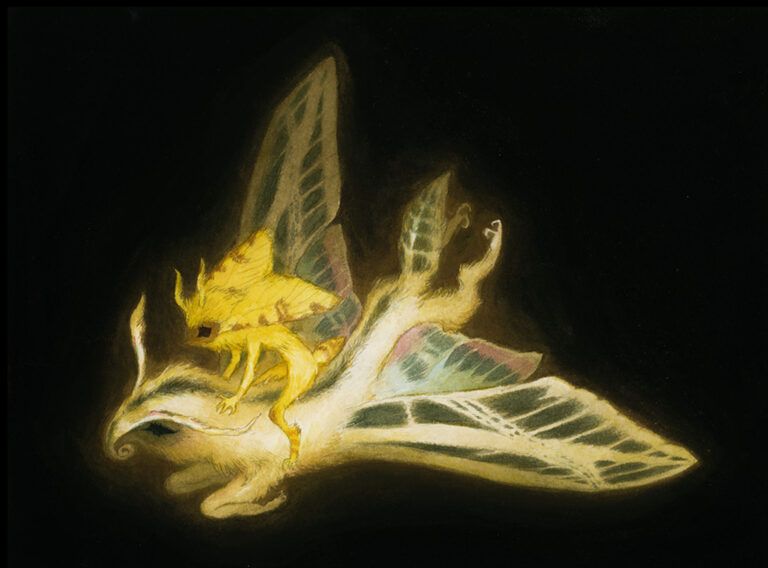How would you describe the process of creating your artworks?
I used to be madly perfectionistic. I could spend a solid week on just planning and sketching a drawing before I even started the actual process of making. For about 2 years now I have been letting go of this method. For my personal work I never sketch anymore, and start straight away with pen on paper. I feel like all the mistakes and little accidents that come with not sketching really add to my work. Sometimes I am working on a composition and all of the sudden, the paper ends and I have to bend the different elements into awkward poses I would have never thought of. I think that is also why I work in between analog and digital media – the limitations of pen and paper make me come up with creative solutions and the digital aspect brings a layer of depth afterwards.
Working with more and more clients also helped me be less of a perfectionist. I have been doing quite a lot of editorial work with super tight deadlines which forced me to make decisions fast and stop correcting every tiny detail. For clients, I usually digitally sketch a very crude idea with some color options, but make sure to leave enough room for improvisation, since I do the actual drawing by hand. Discovering the world of ceramics has been a massively beneficial experience. I do not know anything about this medium so I am not aware of any rules or techniques, I just very confidently and naively try to make whatever I have in my head. There is just so much to discover and with every sculpture I learn something new.
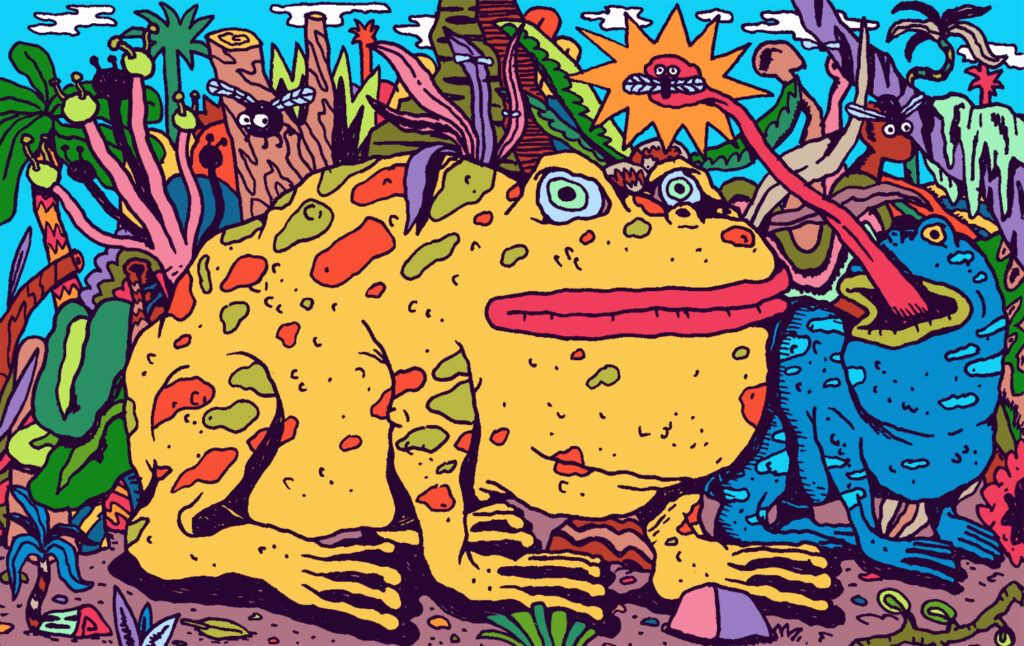
Are your characters based on real people, or do you create them, their stories and connections in the artwork from just your imagination?
My characters are based on strangers I see in the street, my friends and myself. I love observing people from a distance and just imagining their backstories. Living in a city really comes with the big perk of having a limitless supply of beautiful and unique characters to use in my work. Sometimes my characters are personifications of jokes my friends and I make, and other times they are quite literally based on someone very dear to me. I also think it is important to not take yourself too seriously and be able to joke about your own characteristics. I usually make self portraits to get myself out of a somber mood through humor. There are also times I turn problems into characters, so they are less abstract and easier to tackle.
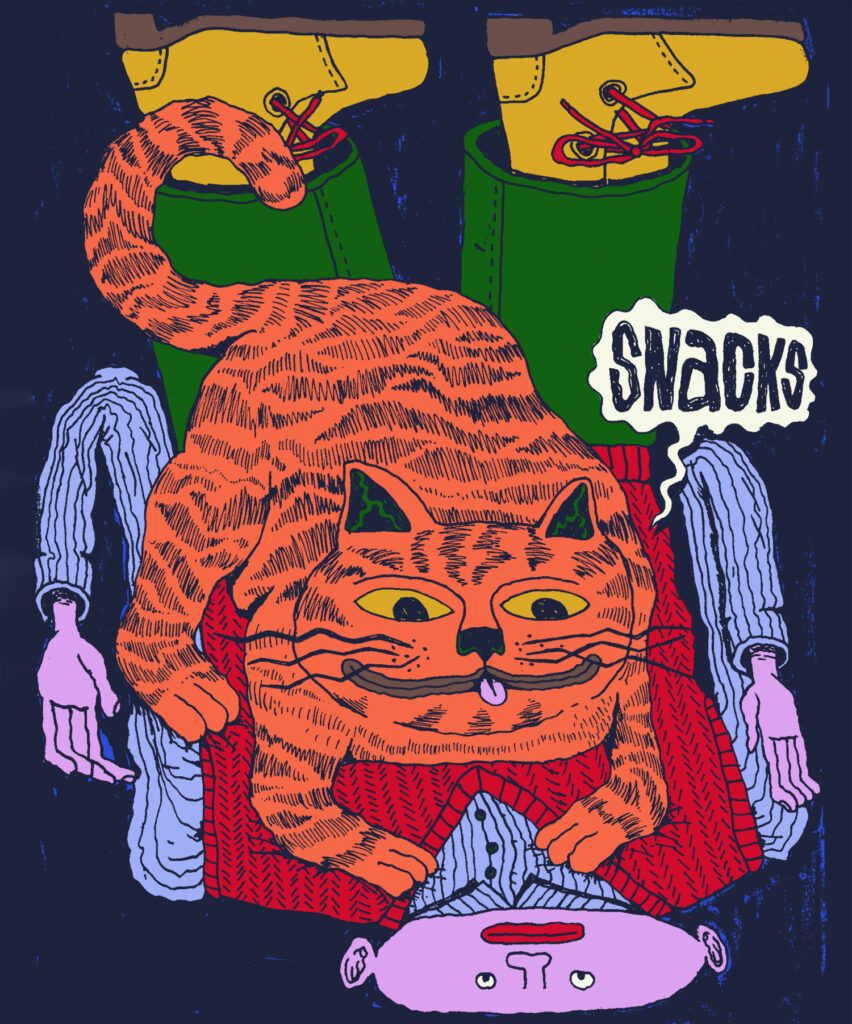


Are there any particular stories behind the human-animal or human-human friendship in your illustrations? If yes, can you tell us some details or share some of the stories with our readers?
The morning I turned 8 my parents took me to the animal shelter to pick up a kitten. I am 24 now and I still hang out with that cat. She is the most mischievous character ever, always up to no good and she does the weirdest stuff to obtain snacks, which gives me an unlimited source of inspiration. I just love how animals and humans don’t speak a shared language but can still hang out and help one another. This semi-symbiotic relationship is insanely fascinating to me. Using animals as a visual metaphor is something I am interested in as well. When I graduated back in 2021, I was a bit overwhelmed with all the new responsibilities of adult working life. I wanted to turn this struggle into a project and teamed up with the DIY publishing house for drawn art Raam Maar (@raam_maar) to publish a risograph zine called Doggy Daycare. The story is about a dog who turns out to be a guy dressed up as a dog in order to avoid his responsibilities. When he is finally brave enough to face the world as a human, someone else takes over the costume and the cycle continues.
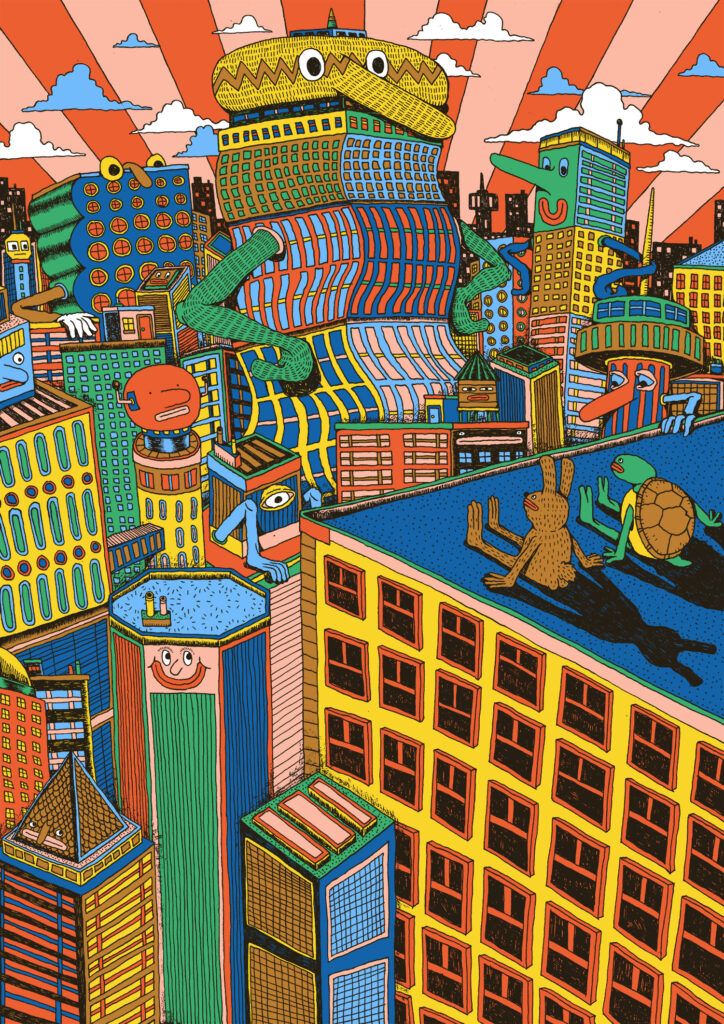
There are some surreal places in your paintings. Are they inspired by real places you have visited or are they just a part of the story happening in the painting?
I am from the Netherlands, where the landscape is predominantly super flat with endless kilometers of grass, with the occasional tree or cow. It can get quite boring, so to spice things up I like to come up with surreal and otherworldly landscapes in my work. It is almost like the Dutch landscape provides me with an empty canvas, welcoming me to create my own world. I have noticed lately that the environments in my work are starting to look more like the English countryside, specifically the area of Devon. My girlfriend is originally from there and every time when we drive around Devon I am amazed by all the tiny roads crossing through the dreamy hills and beautiful national parks. When it comes to creating more urban environments, they are almost always based on my hometown of Rotterdam. Rotterdam got very heavily bombed in the Second World War and almost all historical buildings were destroyed. From the ashes there arose a very eclectic mix of strange and modern architecture resulting in a very unique urban landscape.
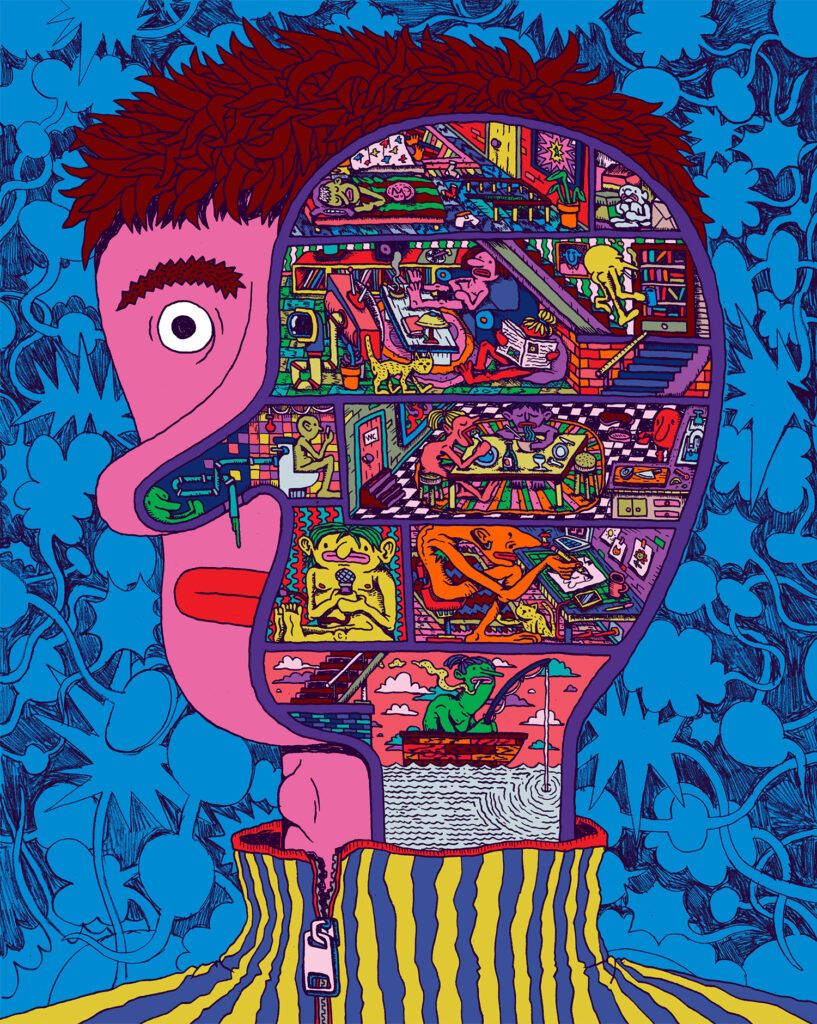
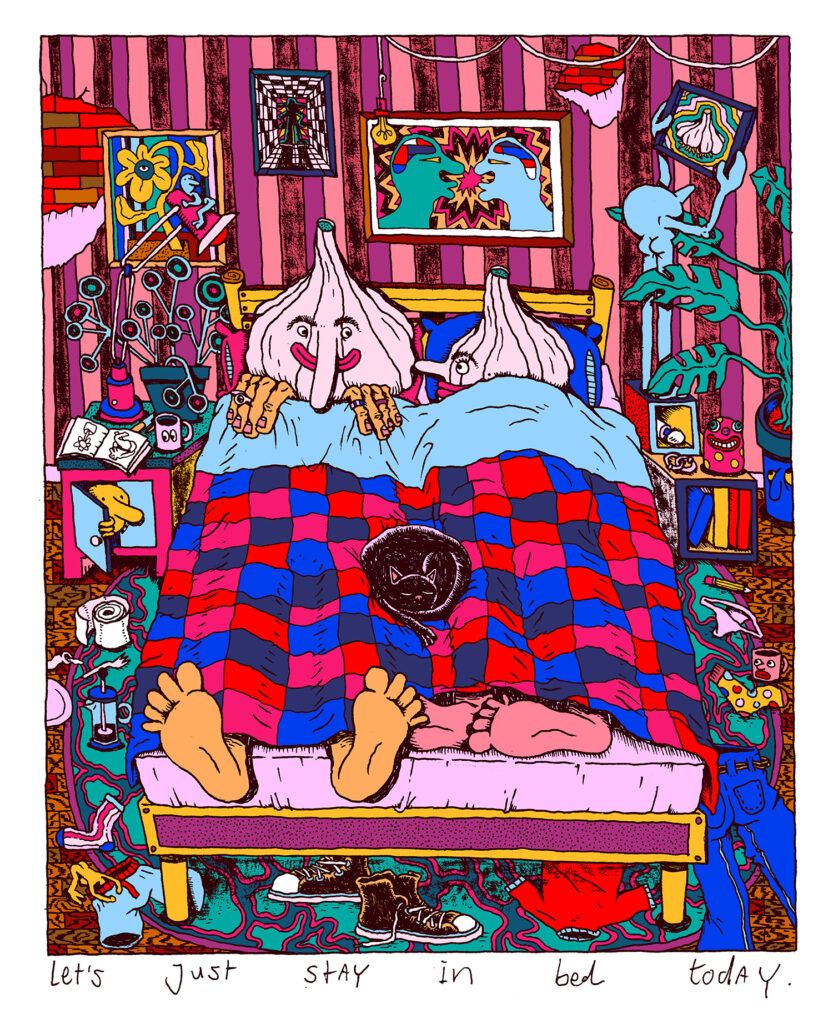
Your style is pretty colorful, who is your inspiration? And how does your style develop over time?
My colors used to be muted and dark a couple of years ago. I took a lot of inspiration from German expressionism, looked at painters like Bernard Buffet and was heavily influenced by all the details in the work of M.C. Escher. I was a bit stuck in my own head and I had a more somber outlook on life and myself. I think how I felt really affected my color use and style.
The older I get, the more I figure out who I am and accept myself exactly as I am, which has resulted in me being way more happy and changed my style for the better. Now I look a lot at 60s and 70s design and illustrations by artists like Seymour Chwast, Kiyoshi Awazu and Tove Jansson. My girlfriend inspires me as well, she was the one who pointed out the theory about my use of muted and dark colors, and asked why I was so afraid of bright colors. As mentioned earlier, ever since I let go of perfectionism I feel like my work got a lot more fun. When it comes to color use, I rarely plan ahead anymore, I just start with whatever color fits the mood and work from there until I feel like the right palette is complete. The illustration becomes a puzzle where I fit all the different elements in the right place.
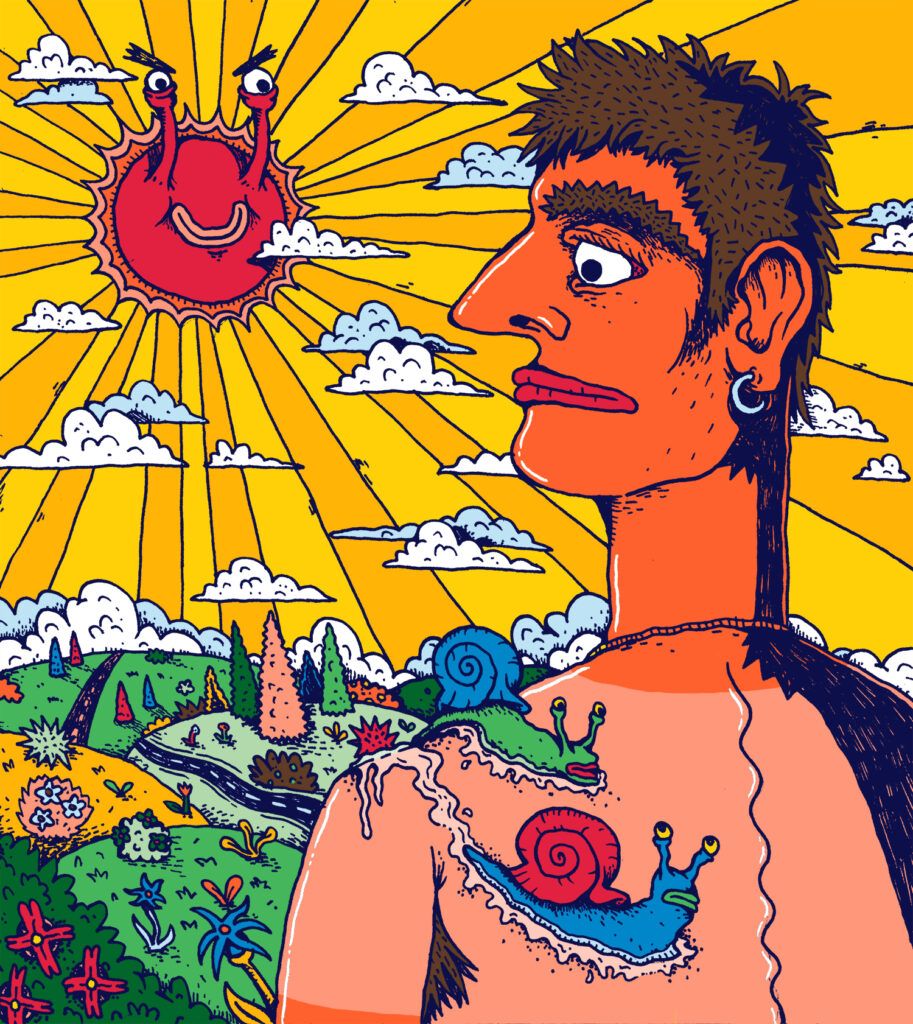
Are you currently preparing any exhibitions or projects we can look forward to?
I have a few pieces that will be part of a group show around the theme of nostalgia hosted by Hasbrook Galleries (@hasbrookgalleries) in Chicago, which will be my first time doing a show in the US. There is also a group show at Tinimini Room (@tinimini_room) in the historical city of Dordrecht, where I will have a few pieces. I recently finished two very detailed spreads for a book about Rotterdam that should come out around May or June. But for now, I am mainly busy with visuals for a cycling brand, a music related project and some commercial work.
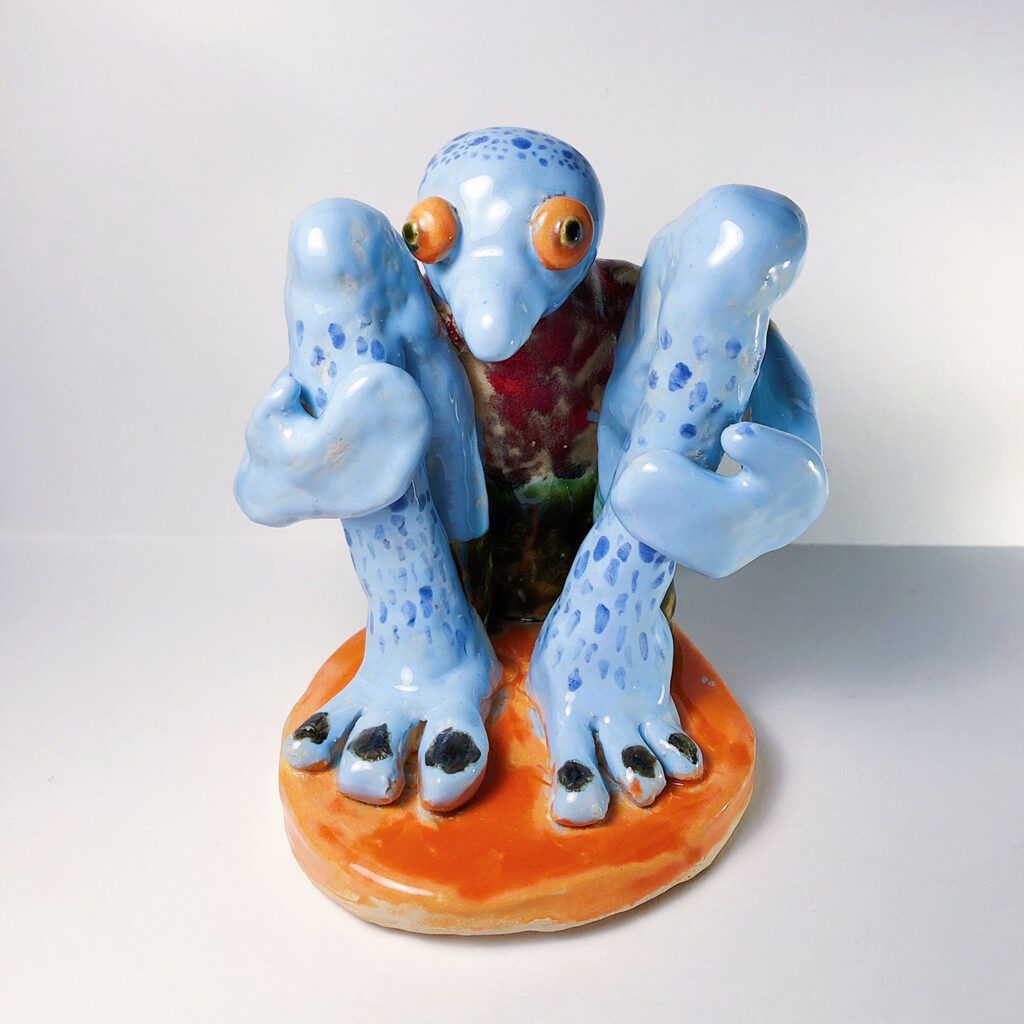


Within the framework of our current theme “Who Let the Dogs Out”, what animal would you like to have as a lifetime companion (could be realistic or fantastic)?
I would absolutely love to have a couple of chickens as lifetime companions. Maybe this has something to do with living in a tiny studio apartment, but it is the dream to wake up and look outside my future garden with lots of really happy chickens. The thought of petting and feeding them while I pick up their eggs before I start drawing sounds like a very happy life to me. I will probably let them inside and hang out with my poultry pals all the time.

